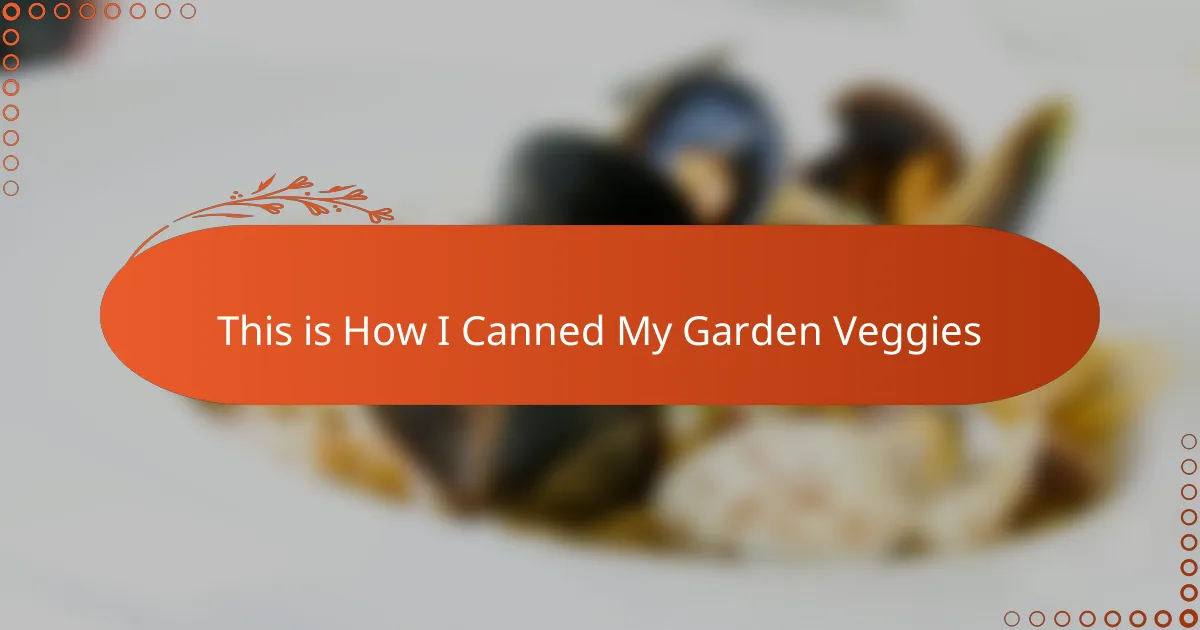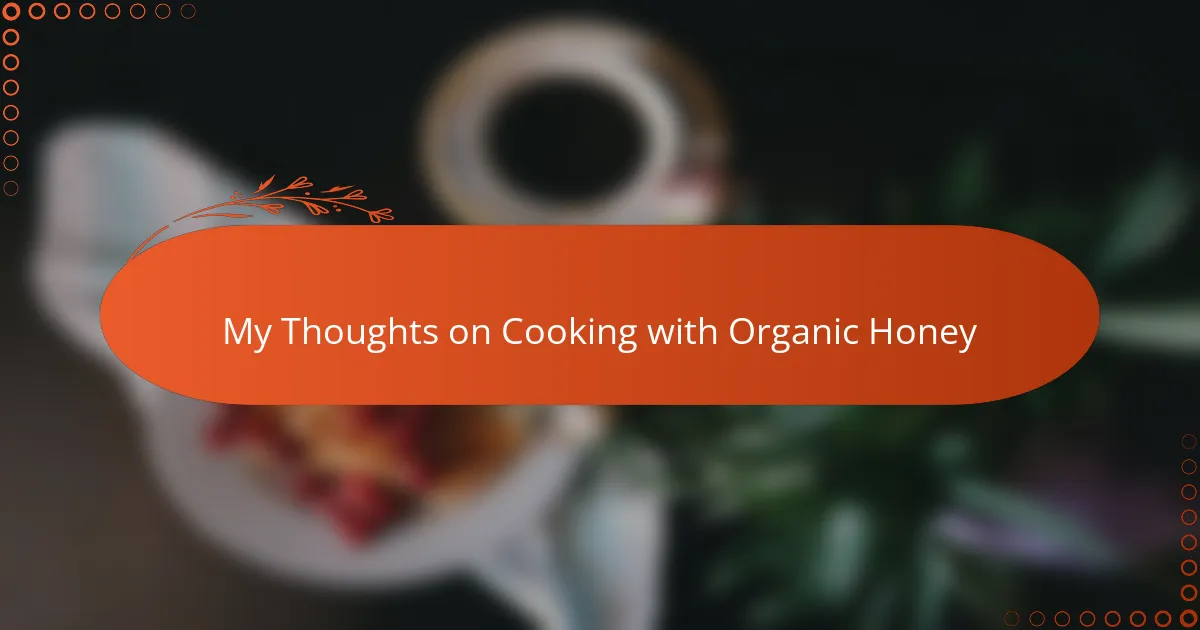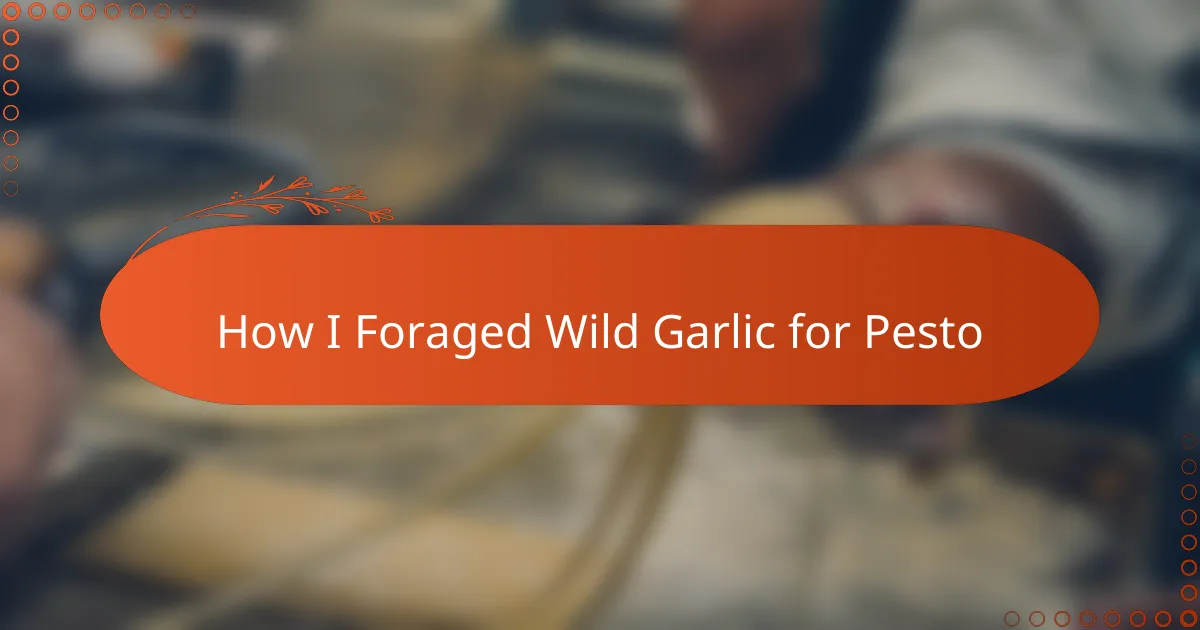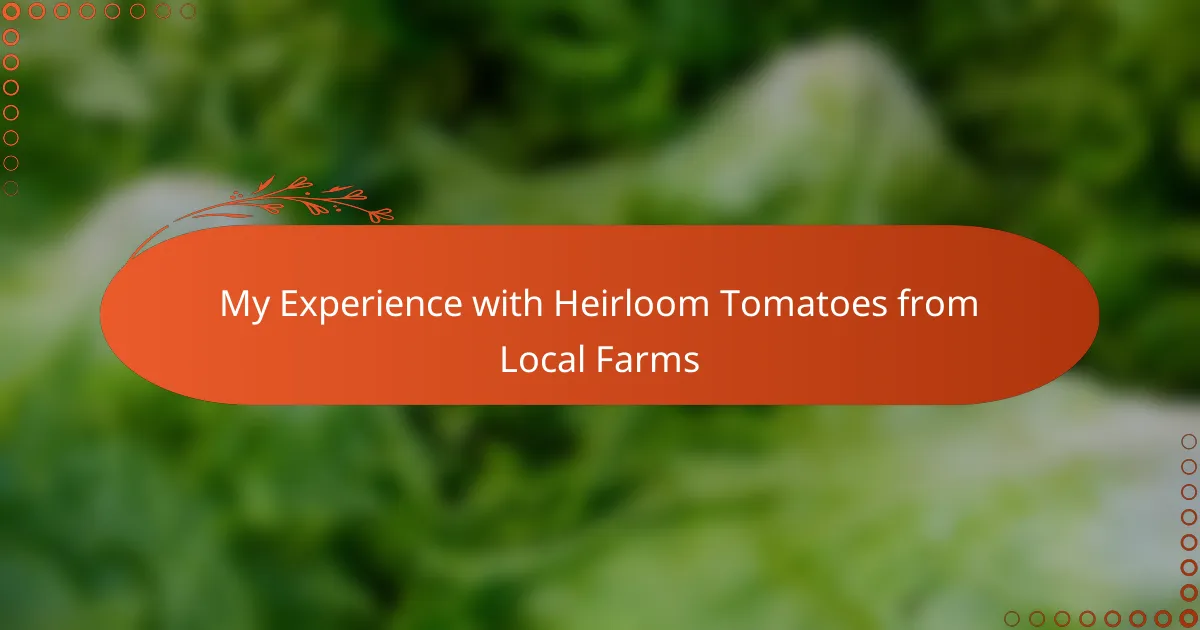Key takeaways
- Home canning is a valuable skill for preserving garden produce, requiring essential tools like pressure canners and jar lifters for safety and efficiency.
- Proper preparation of vegetables, including washing, cutting, and possibly blanching, is crucial for quality canning results.
- Following verified recipes and processing times is key to ensuring safety and preserving flavor; sterilizing jars and lids is also essential.
- Storing canned goods in cool, dark places helps maintain their quality, allowing for easy incorporation into meals, enhancing convenience and flavor.
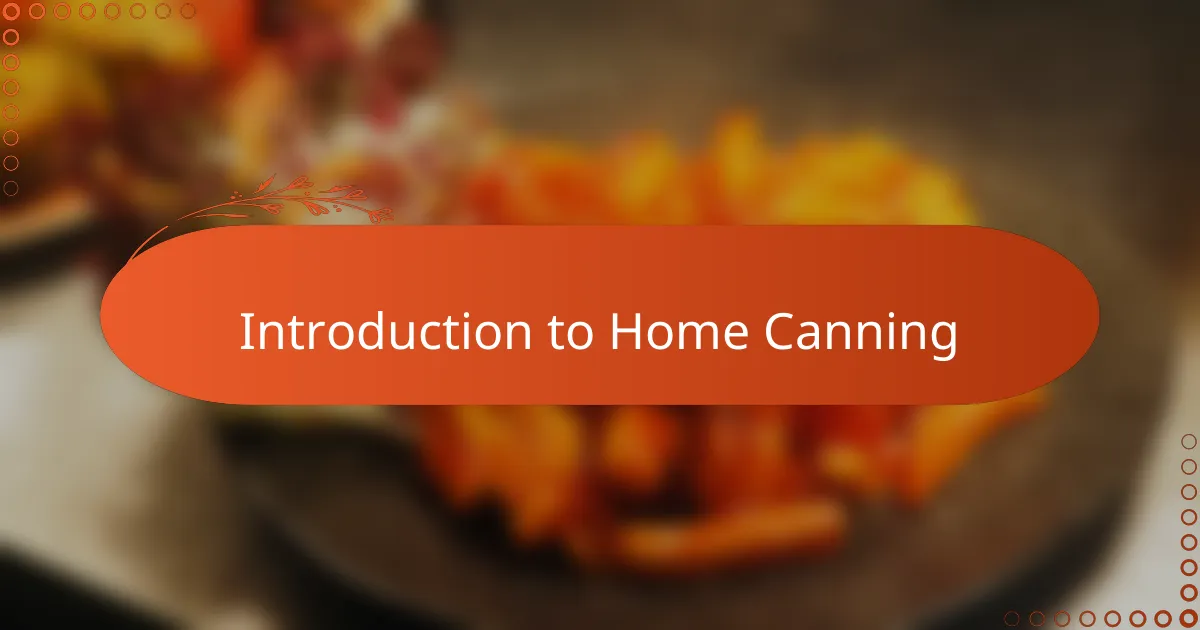
Introduction to Home Canning
Home canning is one of those skills that feels like a true rite of passage for anyone serious about preserving the fruits of their garden. I remember the first time I sealed my jars and felt that satisfying “pop” – it was like capturing a little piece of summer to enjoy all year long. Have you ever wondered how people managed to store fresh flavors before the era of refrigeration?
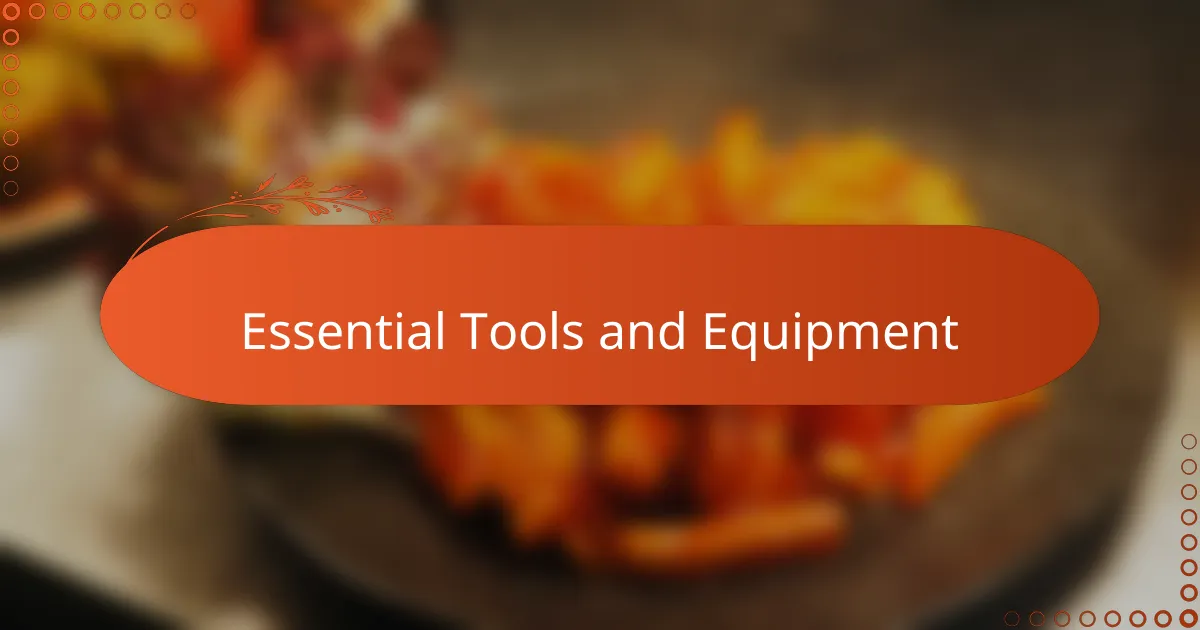
Essential Tools and Equipment
To get started with canning, you really need a reliable set of tools. A good pressure canner or a large water bath canner made all the difference for me – they ensure that the food is safely preserved without risking spoilage. Do you ever worry about whether your jars will seal properly? That’s where a quality jar lifter and funnel come in handy, making the process smoother and less stressful.
I can’t emphasize enough how much using the right equipment boosted my confidence. Having a clean set of Mason jars, new lids, and rings ready before you start saves you from frantic last-minute runs to the store. Plus, a magnetic lid lifter is a small tool with a huge impact – it’s saved me many times from dropping sticky lids in the hot water.
Sometimes, I find that simple kitchen scales and a timer help keep consistency when following recipes, especially if you’re new to canning like I was. It’s these little details that turned a daunting task into an enjoyable ritual. What tools have you found indispensable in your kitchen adventures?
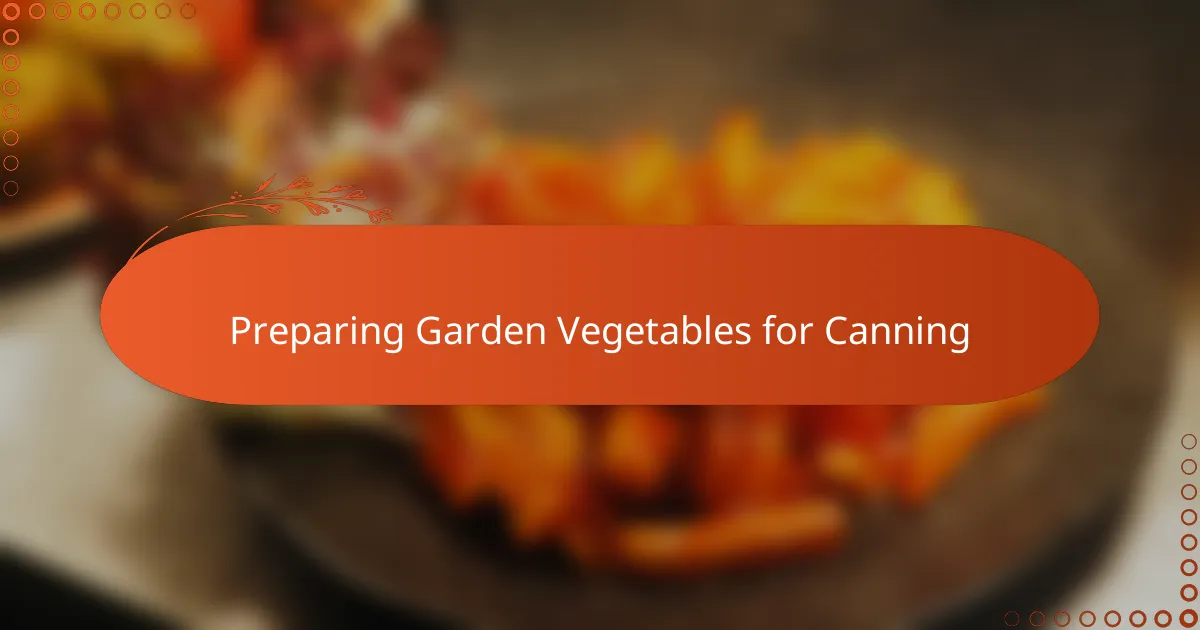
Preparing Garden Vegetables for Canning
Getting garden vegetables ready for canning always starts with a good rinse. I learned early on that gently washing each veggie removes dirt and tiny bugs, but you have to be careful not to bruise them—that’s a rookie mistake I made more than once. Have you noticed how fresh tomatoes feel more delicate after a quick soak in lukewarm water? That warm bath actually loosens their skins, making them easier to peel, which is essential for a smooth canning process.
After washing, I usually spend time trimming and cutting the vegetables into uniform pieces. This step might seem tedious, but it really matters for even cooking and packing. When I first started, I underestimated how much time proper prep adds, but now I actually enjoy the rhythmic peeling and chopping—it’s like a quiet moment before the busy canning rush.
Sometimes, I blanch my veggies before canning to preserve their color and texture, especially with green beans and carrots. Blanching means briefly boiling them, then plunging into ice water to stop cooking—trust me, it keeps them crisp and vibrant in the jar. Ever tried skipping this step and ended up with dull, mushy canned veggies? I learned that the hard way, and since then, blanching is my secret weapon for picture-perfect preserves.
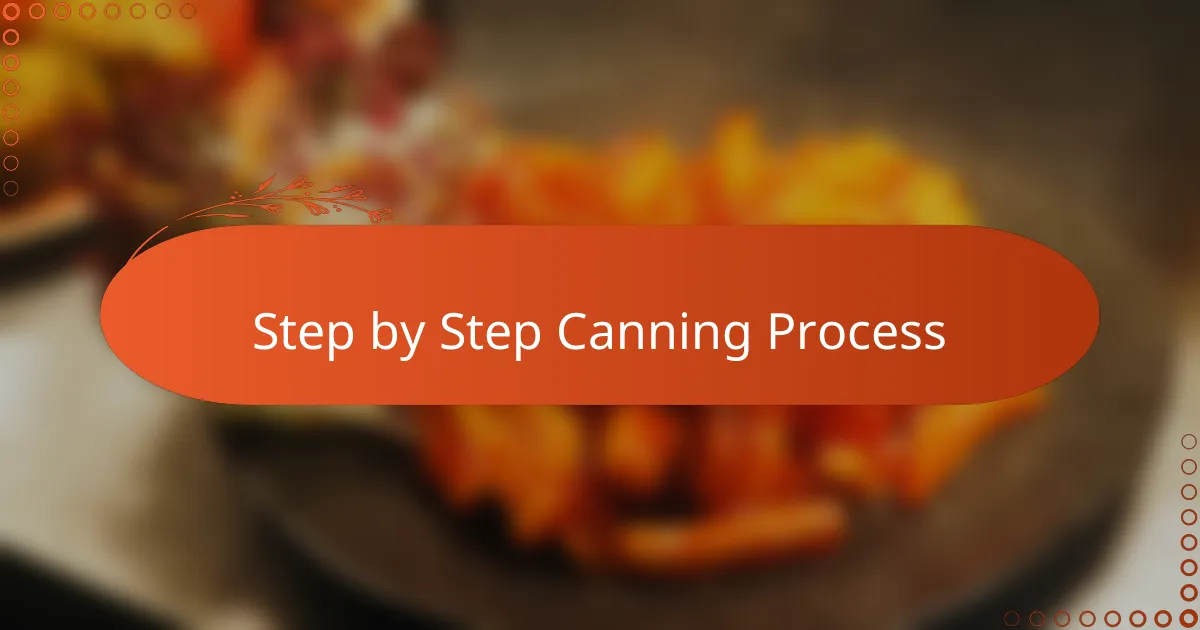
Step by Step Canning Process
Once I got all my jars prepped and my veggies ready, I started by filling the jars almost to the top with the hot vegetables and their cooking liquid. Leaving just the right amount of headspace—the small gap between the food and the lid—is crucial, and I remember double-checking this detail each time because too little or too much can cause sealing issues. Have you ever wondered why such a tiny gap matters so much? It creates the perfect vacuum seal that keeps your garden’s bounty fresh for months.
Next comes the fun part—placing the lids on the jars and securing the rings just finger-tight. I found that overtightening rings was a rookie mistake; it prevents air from escaping during the canning process, which is essential for that satisfying “pop” later. In my early days, I tightened them like they were screws on a toolbox, only to realize the jars wouldn’t seal properly. That little lesson changed how I approached the whole process.
Finally, I carefully lowered the jars into the boiling water bath or pressure canner, depending on the veggie. Timing here is everything. I set my timer religiously because underprocessing can spoil all the hard work while overprocessing can ruin texture and flavor. Have you ever paced around your kitchen watching a pot like it’s about to perform miracles? That’s how I felt, knowing that these few minutes would lock in summer’s taste until next season.
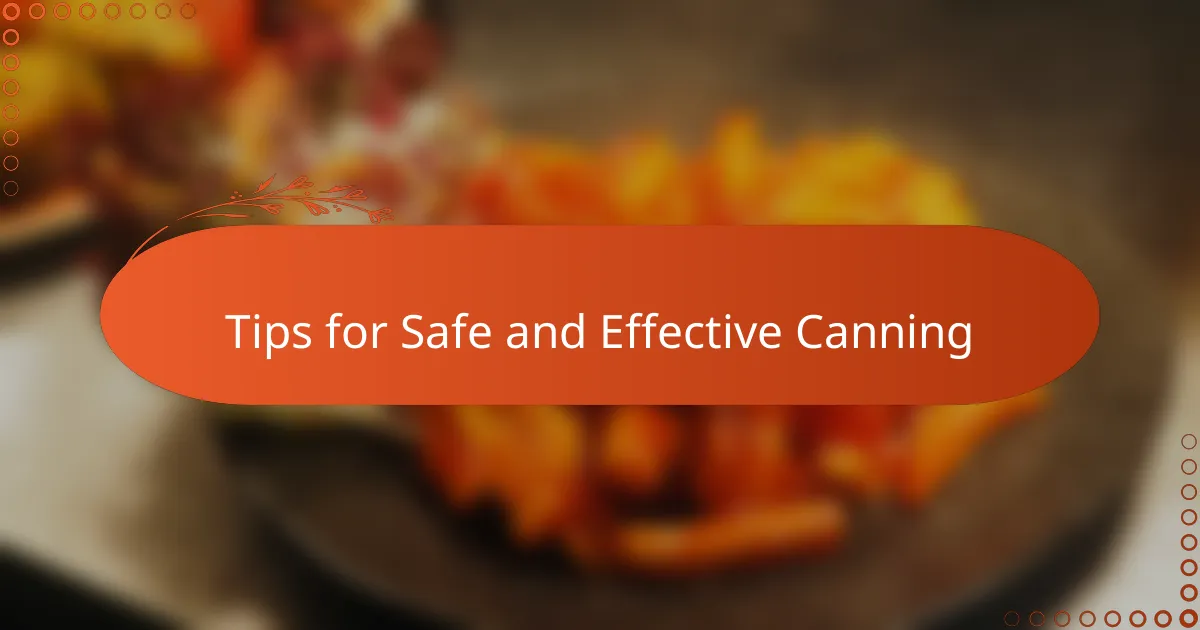
Tips for Safe and Effective Canning
One of the biggest lessons I learned early on was to always follow verified recipes and processing times exactly. I used to think a little extra time in the canner wouldn’t hurt, but it actually overcooked my veggies and compromised their texture. Have you ever wondered why sticking to those times matters so much? It’s all about safety and preserving flavor without turning your garden gems into mush.
Sterilizing jars and lids is another step I never skip now. I remember once rushing through this part and regretting it when a jar didn’t seal correctly. Taking those extra minutes to boil or oven-sterilize your equipment really pays off by preventing bacterial growth and ensuring a long shelf life for your canned goods.
Pressure canning is essential for low-acid vegetables, and I was a bit intimidated by it at first. I quickly realized that learning to use a pressure canner correctly isn’t just a safety precaution—it’s the key to successful, toxin-free preserves. Have you ever hesitated to try pressure canning? Trust me, once you get the hang of it, it makes you feel like a true kitchen pro safeguarding your family’s health.
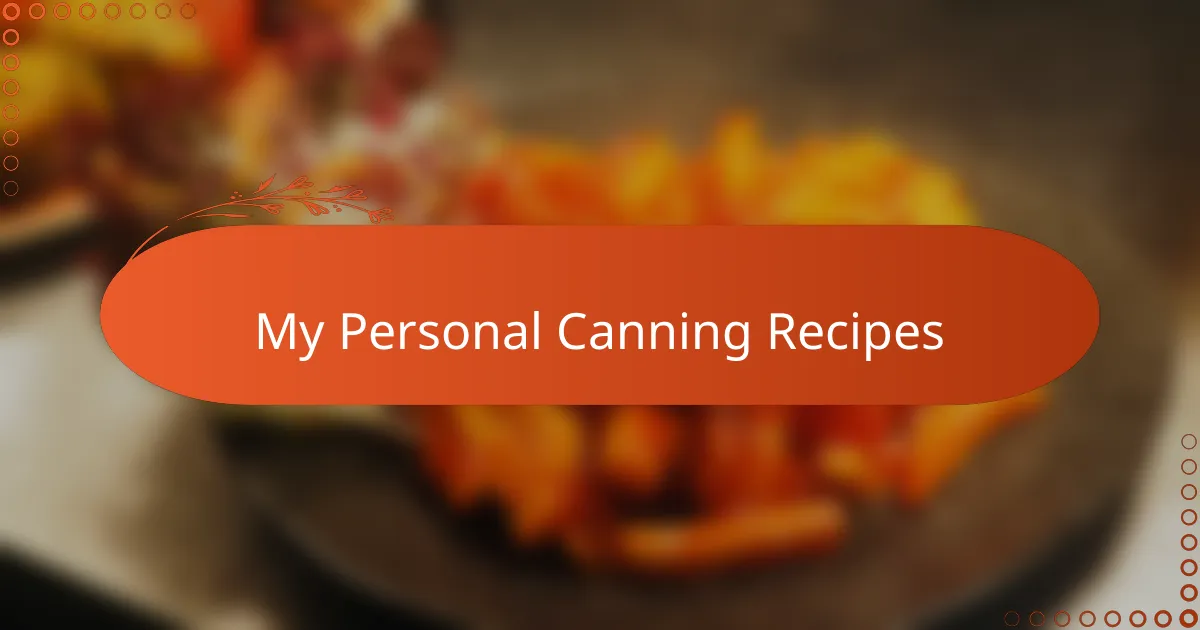
My Personal Canning Recipes
When it comes to my personal canning recipes, I tend to stick with tried-and-true combinations that highlight the natural flavors of my garden. For example, my roasted tomato and basil salsa has become a household favorite—I love how the smoky sweetness of roasted tomatoes blends with fresh herbs and just the right amount of zing. Have you ever noticed how roasting veggies before canning deepens their flavor? It’s a small step, but it truly transforms the final jar.
I also enjoy experimenting with pickled green beans, using a recipe that balances crispness with tangy garlic and dill notes. I’ve learned that adjusting the spice levels to suit my family’s taste makes a big difference—too much heat can overpower the veggie’s freshness, but just the right kick keeps everyone coming back for more. What’s your take on balancing spice and flavor in preserves? For me, it’s a journey of tasting and tweaking until it feels just right.
Sometimes, I get creative and combine multiple vegetables into a mixed relish. I find this a fun way to use smaller amounts of different crops from the garden, turning them into a versatile condiment. The best part? Knowing that every jar is filled with textures and colors that represent the season. Have you tried mixing your veggies in canning? It’s like capturing a little garden party inside each jar.
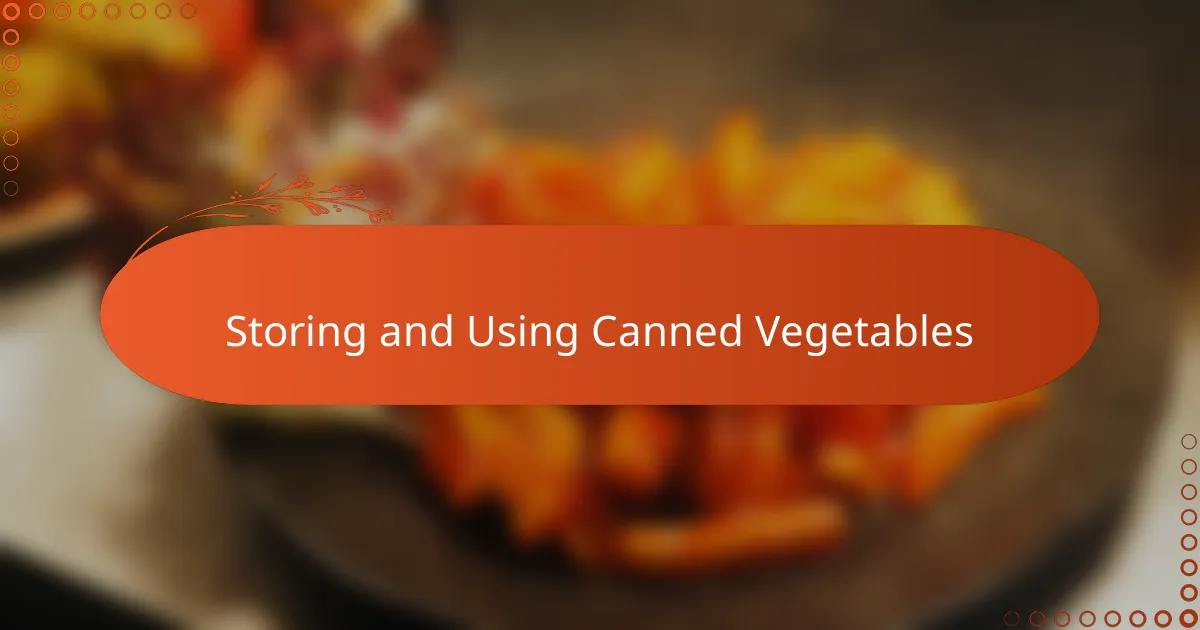
Storing and Using Canned Vegetables
Storing my canned vegetables in a cool, dark place has been key to keeping their flavors vibrant and textures just right. I learned that sunlight and heat can really dull the taste and even spoil the food faster, so my basement pantry became the perfect cozy spot for my jars. Have you ever opened a jar only to find the colors faded or the veggies mushy? That’s a sign the storage conditions weren’t ideal.
When it comes to using canned veggies, I often find myself reaching for them on busy weeknights. There’s something incredibly comforting about opening a jar filled with summer’s bounty, knowing it’s ready to be tossed into soups, stews, or even a quick stir-fry. Have you tried adding home-canned green beans straight into your favorite casserole? It saves time and adds that fresh-from-the-garden flavor I love.
One tip I’ve picked up is to check the seal each time before using a jar. I remember once grabbing a jar that hadn’t sealed properly, and the disappointment of having to discard those veggies still lingers. It taught me the importance of trust in the canning process—when the seal is good, you know the food inside is safe and delicious, giving you peace of mind with every meal.
